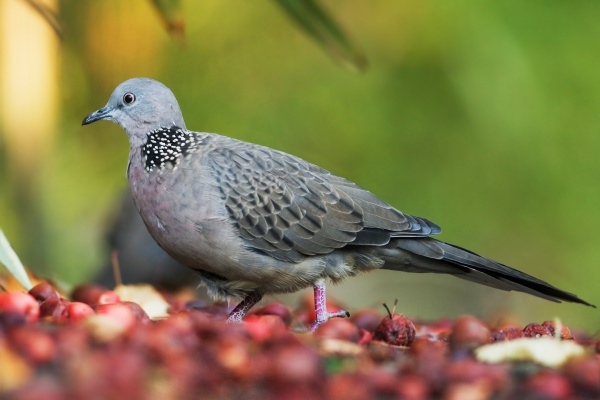Facts About Spotted dove
The spotted dove, also known by several names such as the mountain dove, pearl-necked dove, lace-necked dove, and spotted turtle-dove, is a small pigeon species native to the Indian subcontinent and Southeast Asia. Over the years, it has spread to various parts of the world, establishing wild populations. Originally classified under the genus Streptopelia, it was later reclassified to Spilopelia based on genetic studies.
These doves exhibit a variety of plumage patterns depending on their geographical location, leading to the identification of several subspecies. They thrive in light forests, gardens, and urban settings, often seen flying with a burst of fluttering wings before gliding down to their perches. The five recognized subspecies are *suratensis*, *ceylonensis*, *tigrina*, *chinensis*, and *hainana*.
In terms of appearance, the spotted dove features a rosy buff body, a distinctive black-and-white collar around its neck, and brown feathers sprinkled with rufous spots. They primarily feed on seeds and grains, which they forage from the ground or low vegetation. The species has successfully adapted to new areas such as Hawaii, Australia, and New Zealand, sometimes even outcompeting native dove species.
Spotted doves typically move in pairs or small groups, foraging for food and occasionally consuming insects. In some regions, they breed year-round. Males court females through cooing sounds and aerial displays. Nests are usually built in low vegetation, with both parents sharing the responsibility of raising their chicks. One of the dove's most recognizable traits is its distinctive cooing.
The range of the spotted dove continues to expand, with population numbers varying in different areas. In some places, they have become a hazard by flying into the path of aircraft when startled. Despite these challenges, the spotted dove remains a resilient and adaptable bird, thriving in environments far beyond its original habitat.

 Malaysia
Malaysia